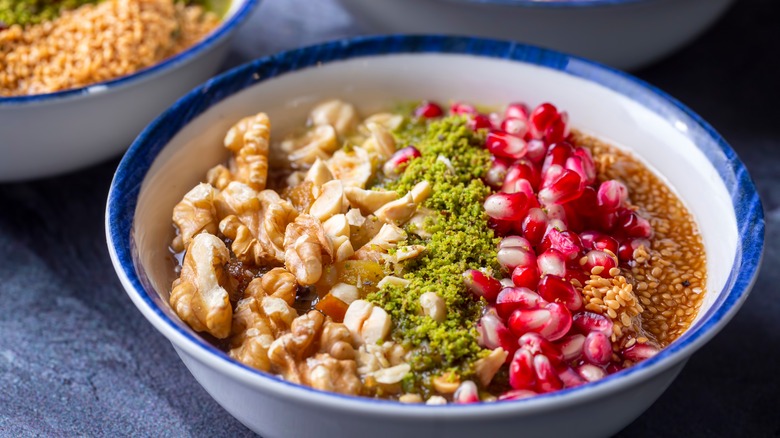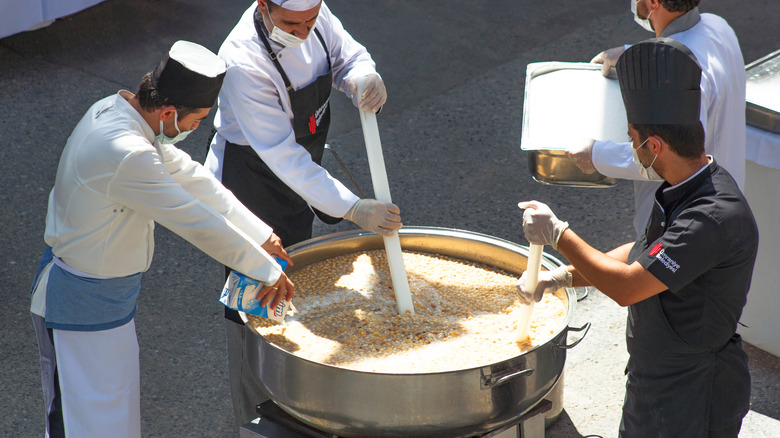Ashura: The Important Dessert Porridge For Muharram
Most non-Muslims are probably familiar with Ramadan, the month Muslims fast from sunrise to sunset. But many may not be familiar with another holy season in the lunar Hijri calendar, known as Muharram. According to Culture Trip, Muharram marks the Islamic New Year, which officially begins as soon as the new moon appears on the year's final day.
The tenth day of Muharram is a significant one. It's a holiday called Ashura that commemorates the day that Nuh (Noah) finally departed the ark and when Musa (Moses) split the Red Sea. On Ashura, as Conde Nast Traveler shares, Muslims around the world indulge in a dessert that takes on the same name as the holiday — either Ashura or Ashure. The same way Americans celebrate Thanksgiving by eating the food that was believed to be eaten by the pilgrims, Muslims who observe Ashura eat the porridge that Nuh was said to have cooked for himself before he left the ark.
There are different types of Ashura
Given that there are many Muslim communities around the world, there are also a wide variety of Ashura recipes that vary depending on regional ingredients and preferences. Recipes typically start with whole wheat, Conde Nast Traveler states, but some are more savory, sweeter, thicker, or soupier than others, as Malay Mail points out. For example, the Kelantan version of Ashura contains beef or chicken as well as pumpkin, sweet potato, corn, mung beans, and onions. It's seasoned with lemon grass and black pepper. The dish forms a thick porridge. In Melaka, on the other hand, the Ashura is more like soup, with a flavor comparable to that of dodol, containing coconut milk and rice flour.
Per Malay Mail, making Ashura requires around eight hours of prep and cooking combined. Traditionally the dessert is started in the early morning, the day before the holiday, and is finished later in the evening. On Ashura, the pudding is served fresh and can be enjoyed for up to a week in celebration of Muharram.

